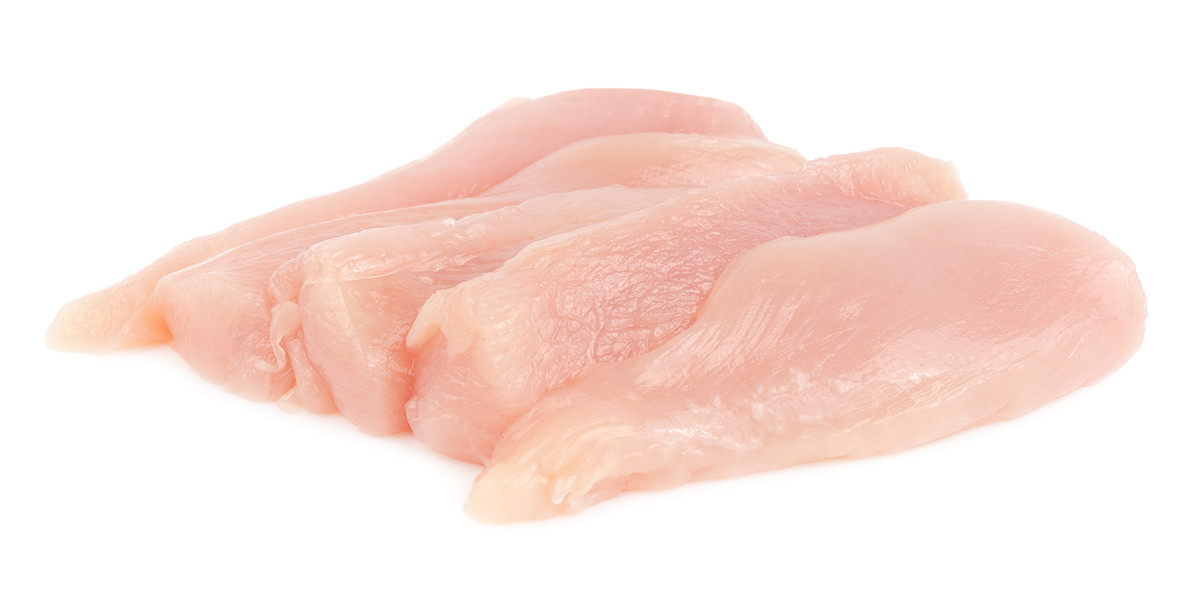Chicken filets were processed with several innovative food technologies, then extracted and analysed with high-resolution mass spectrometry with the aim to find potential, treatment-dependent differences in the metabolite compositions.
Purpose of test/study/ experiment/trial
Metabolite patterns can provide insight into the consequences of different food treatments. By comparing differently processed samples, the up- or down-regulation of specific metabolites can be detected. The identification of relevant metabolites with the help of a reference library can give an indication of the character of the observed changes.
Main conclusions
- There were no significant differences in the metabolite composition of non-MAP-treated not-stored (0 days) chicken fillets that were processed with HPP or MW or left un-processed.
- There were no significant differences in the metabolite composition of MAP-treated not-stored chicken fillets (0 days) that were processed with HPP or MW or left un-processed.
Subsequently, as there were no differences between non-MAP-treated and MAP-treated samples, data were merged to simplify the comparison between processing technologies and storage duration.
- There were significant differences in the metabolite composition of not-stored (0 days) and 28 day-stored MW-processed chicken fillets. Some metabolites that are responsible for the differences have been identified.
- There were no significant differences in the metabolite composition of not-stored (0 days) and 28 day-stored HPP-processed chicken fillets.
- There were significant differences in the metabolite composition of not-stored (0 days) and 28 day-stored MAP-treated, un-processed chicken fillets.
Results from processing experiments with PEF and US are currently studied.
Сервис кредит онлайн на карту позволяет получить финансовую поддержку в любое время и из любого региона. Достаточно телефона и доступа в интернет, чтобы оформить заявку и получить деньги. Все процессы автоматизированы, что обеспечивает скорость и прозрачность. Услуга подходит для экстренных и плановых расходов, когда важно не терять времени.
Methods
Chicken filets were cooked, cut, saturated with 100 % CO2 and either treated with modified atmosphere packaging (MAP) or left untreated. Samples of both groups were then subjected to high-pressure (HPP) or microwaves (MW) or left unprocessed. They were sampled directly (0 days) or stored for 28 days.
Alternatively, chicken fillets were treated raw with pulsed electric fields (PEF) and frozen, or directly frozen while being subjected to ultrasound (US). Controls were mainly frozen. These samples were thawed and cooked before subsequent analysis.
All samples were extracted and analysed with liquid chromatography high-resolution mass spectrometry for their contents of small molecules (metabolites). The metabolomics were performed untargeted, looking for all metabolites, or targeted by comparison to a reference library containing about 400 important physiological metabolites.
Справжнім фінансовим інструментом для дисциплінованих клієнтів стане кредитні картки з пільговим періодом. Протягом цього часу ви можете користуватися позиковими коштами без нарахування відсотків, за умови вчасного погашення. Це дозволяє суттєво економити й користуватися кредиткою фактично безкоштовно. Важливо лише правильно планувати свої платежі та дотримуватися графіка.
The metabolite contents in the different sample groups were compared by statistical data analysis.
What was investigated:
The various chicken samples, in addition to the reference product, were examined according to the following parameters:
1. Modified atmosphere packaging (MAP) treatment, no processing
- Significant changes in the metabolite composition during storage for 28 days
2. High-pressure (HPP)
- No significant changes in the metabolite composition during storage for 28 days
3. Microwave (MW)
- Significant changes in the metabolite composition during storage for 28 days
What is ...
- Metabolite: The small molecules that food (and other biological material) consists of (amino acids, sugars, fatty acids and vitamines).
- Metabolome: The complete set of metabolites found within a biological sample..
- Metabolomics: The analysis of metabolomes.

